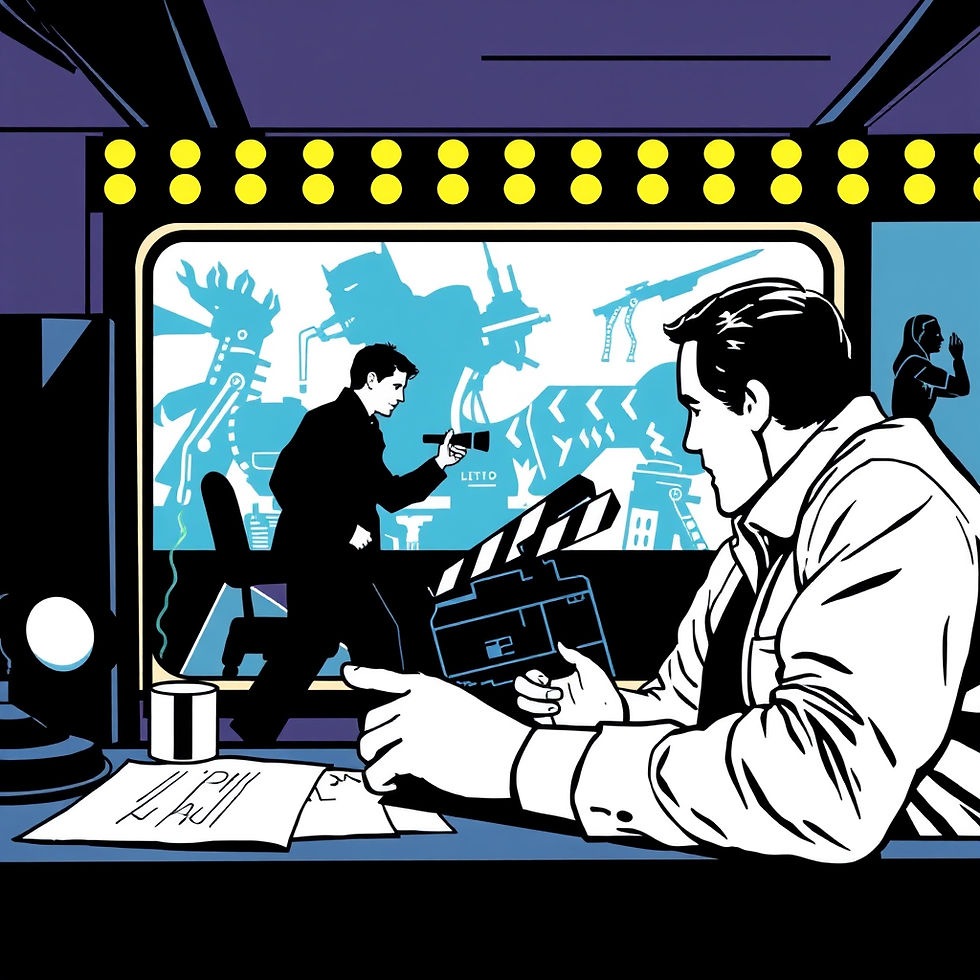from cliché to compelling: how to rewrite tired scenes into fresh moments
- Krysia S.
- Jul 18
- 3 min read
Sometimes, a scene just falls flat. You know the one—where your character says something that feels generic, the action feels too familiar, or the emotional beat doesn’t quite land.

It’s not that the scene is “bad.” It’s that it’s been done—and readers can feel it.
That’s the tricky thing about clichés: they’re not always wrong. They’re often almost right… just not unique enough to leave a lasting impression.
In today’s post, we’re digging into before-and-after examples of cliché scenes and showing you how to rewrite them into something more vivid, surprising, and emotionally resonant.
cliché #1: the breath she didn’t know she was holding
Before (cliché):
She let out a breath she didn’t realize she was holding.
We’ve all used it. We’ve all seen it. And while it may technically be accurate, it’s become so overused that it no longer evokes real tension.
After (fresh rewrite):
Her lungs burned, tight and panicked. When the verdict came, the air spilled from her in a stuttering exhale—half relief, half disbelief.
Why it works: This version taps into specific physical sensation and emotion. It personalizes the moment, instead of defaulting to a stock phrase.
cliché #2: the love-at-first-sight instant attraction
Before (cliché):
Their eyes met across the room, and in that moment, she knew: he was the one.
After (fresh rewrite):
She spotted him arguing with the barista about almond milk—animated, annoying, and weirdly charming. Great. Her type.
Why it works: Instead of melodrama, we get specificity, tone, and humour. This approach shows personality and opens the door for a more grounded romantic arc.
cliché #3: the mentor’s dying words
Before (cliché):
“You’re stronger than you think,” he whispered, before his eyes fluttered shut forever.
After (fresh rewrite):
Blood bubbled at the corner of his mouth. “Don’t make the same mistake I did,” he rasped. “Forgive her.” Then silence—unfinished and heavy.
Why it works: We avoid the vague inspirational platitude and instead give the mentor a final moment that adds tension, character history, and a new layer of internal conflict for the protagonist.
cliché #4: the villain monologue
Before (cliché):
“You fool! I’ve been behind everything all along!” the villain sneered, twirling their mustache.
After (fresh rewrite):
“I never wanted this,” he said, not looking at her. “But when you burned everything down, you left me with nothing. So I rebuilt it all—with teeth.”
Why it works: We trade cartoonish villainy for motive, emotion, and a quiet intensity. The villain doesn’t gloat—they reveal. That’s what gives the moment power.
cliché #5: the makeover changes everything
Before (cliché):
She stepped out in a red dress and heels, and suddenly, everyone saw her differently.
After (fresh rewrite):
She hated the heels, but she held her head high anyway. When she entered the room, it wasn’t the dress that turned heads—it was the look on her face that said, I’m not hiding anymore.
Why it works: This rewrite shifts the focus from surface-level change to internal transformation. The power doesn’t come from clothes—it comes from confidence.
Clichés aren’t just overused—they’re underdeveloped.The fix isn’t to avoid every familiar beat—it’s to dig deeper. Add voice, specificity, emotion, and context that only you can bring to the scene.
Your characters don’t need to say what’s been said before. They need to say what only they would say.




Comments